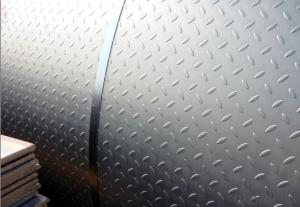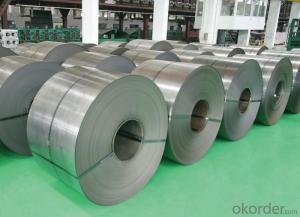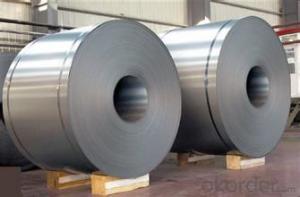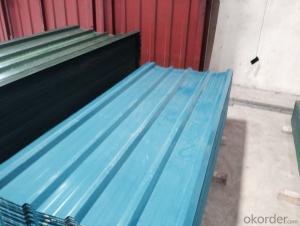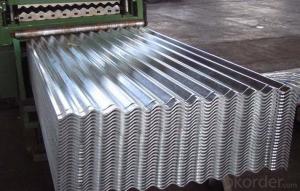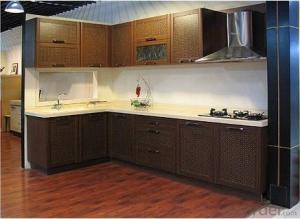Steel Rolled Coil SS400 A36 Q235 Q345 Q195 Hot Rolled Steel Coil
- Loading Port:
- Shanghai
- Payment Terms:
- TT OR LC
- Min Order Qty:
- 5000 m.t.
- Supply Capability:
- 60000 m.t./month
OKorder Service Pledge
OKorder Financial Service
You Might Also Like
Hot rolled coils/plates
Type: steel coil and steel plates
Material: SS400-Q235-Q345-SPHC
Width:1250mm 1500mm 1800mm 2000mm
HOT-ROLLED COIL/PLATES(Material: SS400-Q235A/B-SPHC) | |||
2.00*1250/1500L | 3.50*1250/1500L | 5.75*1250/1500L | 11.50*1250/1500L |
2.30*1250/1500L | 3.75*1250/1500L | 7.50*1250/1500L | 11.75*1250/1500L |
2.50*1250/1500L | 4.50*1250/1500L | 7.75*1250/1500L | 13.50*1250/1500L |
2.75*1250/1500L | 4.75*1250/1500L | 9.50*1250/1500L | |
3.00*1250/1500L | 5.50*1250/1500L | 9.75*1250/1500L | |
PATTERN-ROLLED COIL/PLATES(Material: Q235A-Q235B) | |||
3.00*1250L | 3.75*1250L | 4.75*1250L | 5.75*1250L |
3.50*1250L | 4.50*1250L | 5.50*1250L | 7.50*1250L |
MIDDEL-PLATE(Material: Q235A/B-Q345A/B) | |||
8*1800/2000L | 16*1800/2000L | 25*1800/2000L | 45*1800/2000L |
10*1800/2000L | 18*1800/2000L | 30*1800/2000L | 50*1800/2000L |
12*1800/2000L | 20*1800/2000L | 35*1800/2000L | |
14*1800/2000L | 221800/2000L | 401800/2000L | |
Name | galvanized steel coil dx52d z gi |
Grade | GB/T-12754: 2006, JIS3302, EN 10142, ASTM A653, JIS G3302, SGCC/SGCH, GB/T2518, European Standard, ASTM A792, JIS G3321, JIS G3317 |
BASE PLATE | Cold rolled steel sheet, hot dipped zinc coated steel sheet hot dipped A-Z coated steel sheet |
EQUIPMENT | Double coating double baking; |
CAPACITY | 5000Mt/week |
SIZE | Thickness 0.18mm—2mm, width 40mm—1250mm |
ZINC COATING | 40g-275g /m2 |
PAINT THICKNESS | Top:20+-5um, back:5-7um |
COIL WGT | 3Mt - 8Mt |
COIL ID | φ508mm,φ610mm |
BASE SHEET | Cold rolled steel sheet, hot dipped zinc coated steel sheet (small, regular or zero spangle), hot dipped A-Z coated steel sheet |
SURFACE PAINT | EP, PE, HDP, SMP, PVDF |
COLOR SERIES | RAL color number series |
Applications of cold rolled steel sheet coil :
1) Automotive bodies: filters, fuel tanks, etc.
2) Construction materials: roofings, welding pipes,
3) Electric and electronic appliances: computer cans, etc.
4) Steel cans: containers, etc.
5) Steel furniture: washing machines, refrigerators, microwaves, etc.
6) Drums
7) Office equipment: printer, recorders, etc.
8) Motors and transformers
Process of cold rolled steel sheet coil :
Pay off reel-double cut shear-welder-notcher-entry accumulator-pre cleaning section-furnace-hot bridle-zinc pot-air knife-after cooler-water quench-dryer- skin pass mill-dryer-tension leveler-dryer-chemical coater-chemical oven-cooler-exit accumulator-oiler-exit shear-tension reel.
Features of cold rolled steel sheet coil :
1) cold rolled steel coils prices is manufactured to have a long durability, strong corrosion resistance and shiny surface.
2) cold rolled steel coils prices features excellent forming properties, paintability, weldability, and is suitable for fabrication by forming, pressing and bending.
- Q:What is the difference between stainless steel and regular steel sheets?
- Stainless steel and regular steel sheets have distinct differences in their composition and properties. Stainless steel is an alloy comprising iron, chromium, and other elements like nickel and molybdenum. In contrast, regular steel is predominantly made of iron with small amounts of carbon and impurities. The primary disparity between stainless steel and regular steel sheets lies in their corrosion resistance. Due to the presence of chromium, stainless steel exhibits high resistance to corrosion. When exposed to oxygen, chromium forms a protective layer called a passive film on the surface of the steel, preventing rust formation. This makes stainless steel suitable for applications in environments with moisture or chemical exposure. On the other hand, regular steel sheets are susceptible to corrosion as they lack the protective chromium layer. To enhance their corrosion resistance, they may require additional coatings or treatments. Without proper protection, regular steel sheets can rust and deteriorate when exposed to moisture or corrosive substances. Strength and hardness are additional distinguishing factors between stainless steel and regular steel sheets. Stainless steel, with its alloy composition, is generally stronger and more durable than regular steel. It can withstand higher temperatures and has better resistance to wear and tear. Regular steel, while strong, may not offer the same level of strength and durability as stainless steel. Aesthetic appeal is another contrasting aspect. Stainless steel sheets have a shiny, reflective surface, imparting a modern and sleek appearance. They are commonly used in architectural and decorative applications where visual appeal is desired. Regular steel sheets, on the other hand, have a more dull and matte finish and are primarily utilized for structural and industrial purposes rather than for their visual appeal. In conclusion, stainless steel sheets surpass regular steel sheets in terms of corrosion resistance, strength, and aesthetic appeal. They are the preferred choice for applications where durability, hygiene, and maintenance-free performance are essential, such as in kitchens, medical equipment, automotive parts, and construction projects. Regular steel sheets, although less expensive, may require additional protective measures and are commonly employed in structural and industrial applications where corrosion resistance and visual appeal are not primary concerns.
- Q:Do steel sheets rust?
- Yes, steel sheets can rust if they are not properly protected or if exposed to moisture and oxygen for extended periods of time.
- Q:Are the steel sheets resistant to chemicals?
- Yes, steel sheets are generally resistant to chemicals. Steel is known for its strong and durable nature, which makes it highly resistant to corrosion caused by various chemicals. However, the level of resistance may vary depending on the specific type and grade of steel used, as well as the type and concentration of the chemicals involved. In certain cases, such as exposure to highly corrosive substances like acids or alkalis, additional protective measures like coatings or surface treatments may be necessary to enhance the chemical resistance of steel sheets.
- Q:Can steel sheets be used for fencing or security purposes?
- Yes, steel sheets can be used for fencing or security purposes. Steel sheets provide strong and durable barriers, making them suitable for fencing applications to protect properties or secure areas. Additionally, their robustness and resistance to impact make them ideal for enhancing security by preventing unauthorized access.
- Q:What is the difference between a laminated and non-laminated steel sheet?
- A laminated steel sheet is a type of steel sheet that is manufactured by bonding multiple layers of steel together, typically with a layer of adhesive or resin in between. This lamination process enhances the strength and durability of the steel sheet, making it more resistant to bending, impact, and corrosion. The lamination also helps to reduce noise and vibration when the steel sheet is used in applications such as automotive bodies or construction materials. On the other hand, a non-laminated steel sheet is a single layer of steel that has not undergone the lamination process. While non-laminated steel sheets are still strong and durable, they may not possess the same level of resistance to bending, impact, and corrosion as laminated steel sheets. Non-laminated steel sheets are commonly used in various applications such as roofing, siding, and general fabrication. The main difference between laminated and non-laminated steel sheets lies in their structural composition and properties. Laminated steel sheets offer enhanced strength, durability, and resistance to various forces, making them well-suited for demanding applications where structural integrity is crucial. Non-laminated steel sheets, on the other hand, are more cost-effective and suitable for applications where high strength and durability are not the primary requirements.
- Q:What are the potential drawbacks of using steel sheets?
- Using steel sheets in various applications can have several drawbacks. Firstly, corrosion is a major concern with steel sheets. If not adequately protected or coated, they can rust when exposed to moisture or certain environmental conditions. This can greatly impact their structural integrity and lifespan. Secondly, handling steel sheets can be challenging due to their weight. This can pose difficulties during transportation, installation, and maintenance. Moreover, weight restrictions in certain applications may limit the use of steel sheets. Additionally, steel sheets tend to be more expensive compared to alternative materials. The cost of production, processing, and customization of steel can be higher, making it less financially feasible for certain projects. Another drawback is the limited design flexibility of steel sheets. They are typically manufactured in standard sizes and shapes, which may not always meet specific design requirements. Modifying steel sheets can be time-consuming and expensive, thus limiting their adaptability for unique or complex projects. Furthermore, steel sheets have a relatively high thermal conductivity. This means that they can transfer heat quickly and are less effective in providing insulation. In applications where thermal insulation is crucial, alternative materials may be more suitable. Lastly, steel sheets are not environmentally friendly. The production of steel involves significant energy consumption and carbon emissions. Additionally, the extraction and mining of raw materials used in steel production can have detrimental effects on the environment. In conclusion, while steel sheets have advantages like strength and durability, it is crucial to consider these potential drawbacks when selecting the appropriate material for a specific application.
- Q:What are the different thickness options available for steel sheets?
- The thickness options available for steel sheets vary, depending on the specific requirements and applications. Common thicknesses range from 0.4 mm (thin gauge) to 6 mm (thick gauge), with intermediate options such as 1.5 mm, 3 mm, and 4.5 mm also available. These different thicknesses offer flexibility in terms of strength, durability, and suitability for various industrial and construction purposes.
- Q:Are steel sheets suitable for railway track construction?
- Steel sheets are indeed suitable for constructing railway tracks. The reason lies in the exceptional durability and strength of steel as a material, which makes it perfect for withstanding the heavy loads and constant traffic of trains. Railway tracks often utilize steel sheets as the foundation, providing a stable base for the rails and ensuring reliability and stability. Furthermore, steel possesses remarkable resistance to wear, corrosion, and deformation, which are vital factors in maintaining the long-term performance of railway tracks. Its high strength-to-weight ratio also allows for lighter track structures and reduces the need for frequent maintenance. All in all, steel sheets are a favored option in railway track construction due to their robustness, longevity, and cost-effectiveness.
- Q:Can steel sheets be used for electrical switchgear?
- Indeed, electrical switchgear can indeed utilize steel sheets. The utilization of steel in switchgear enclosures is a prevalent choice due to its commendable endurance, robustness, and capacity to safeguard against environmental elements like moisture, dust, and temperature fluctuations. Switchgear cabinets and enclosures frequently employ steel sheets to construct a sturdy and secure housing for electrical components. These steel sheets are typically coated or painted to provide an added layer of defense against corrosion. Moreover, the thermal conductivity of steel aids in dissipating any heat generated by the electrical components within the switchgear. All in all, steel sheets prove to be a fitting material for electrical switchgear enclosures due to their mechanical properties, protective capabilities, and thermal conductivity.
- Q:What is the process of forming corrugated steel sheets?
- The process of forming corrugated steel sheets involves passing a flat steel sheet through a series of rolling mills equipped with corrugating rolls. These rolls have a pattern of ridges and grooves that shape the steel sheet into a wavy or corrugated form. The sheet is fed into the first set of rolls, which press the ridges into the sheet, and then it goes through subsequent sets of rolls to further refine the corrugations. This process creates strength and rigidity in the steel sheet, making it suitable for various applications in construction, roofing, and packaging industries.
1. Manufacturer Overview |
|
|---|---|
| Location | |
| Year Established | |
| Annual Output Value | |
| Main Markets | |
| Company Certifications | |
2. Manufacturer Certificates |
|
|---|---|
| a) Certification Name | |
| Range | |
| Reference | |
| Validity Period | |
3. Manufacturer Capability |
|
|---|---|
| a)Trade Capacity | |
| Nearest Port | |
| Export Percentage | |
| No.of Employees in Trade Department | |
| Language Spoken: | |
| b)Factory Information | |
| Factory Size: | |
| No. of Production Lines | |
| Contract Manufacturing | |
| Product Price Range | |
Send your message to us
Steel Rolled Coil SS400 A36 Q235 Q345 Q195 Hot Rolled Steel Coil
- Loading Port:
- Shanghai
- Payment Terms:
- TT OR LC
- Min Order Qty:
- 5000 m.t.
- Supply Capability:
- 60000 m.t./month
OKorder Service Pledge
OKorder Financial Service
Similar products
New products
Hot products
Hot Searches
Related keywords

